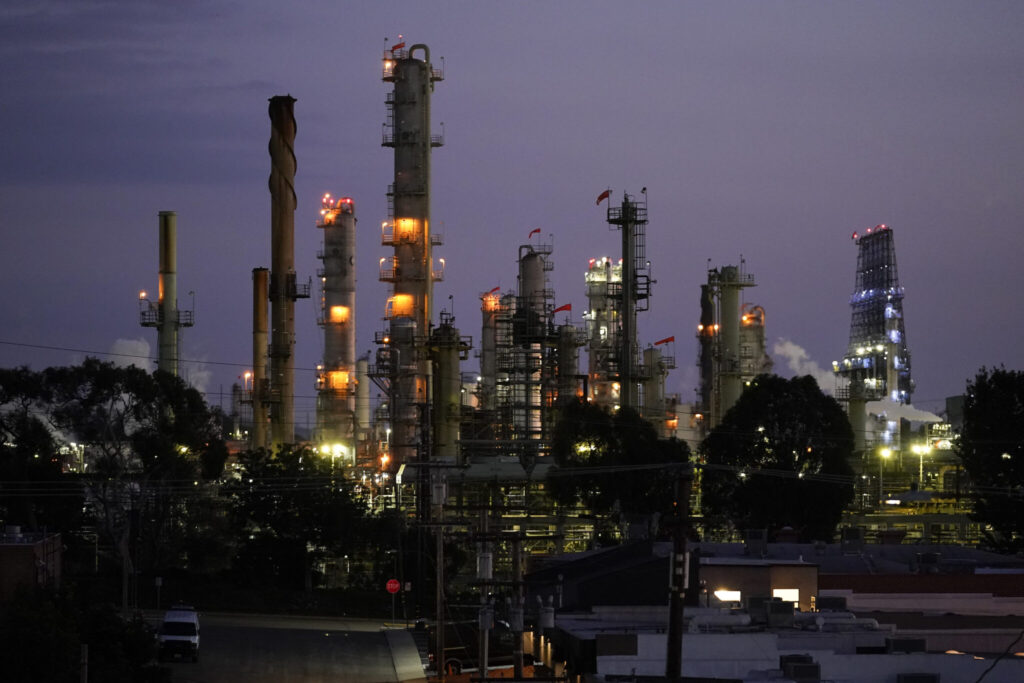U.S. wholesale prices fell sharply last month as inflationary pressure continued to ease after a year and a half of higher interest rates. The Labor Department reported Wednesday that its producer price index — which measures inflation before it hits consumers — dropped 0.5% in October from September, the first decline since May and biggest since April 2020. On a year-over-year basis, producer prices rose 1.3% from October 2022, down from 2.2% in September and the smallest gain since July.
Quick Read
- October Wholesale Price Decline: U.S. wholesale prices experienced a significant drop in October, marking the first decline since May and the largest since April 2020. This decline indicates easing inflationary pressures.
- Year-Over-Year Producer Price Index: The producer price index, a measure of inflation before it impacts consumers, increased by 1.3% from October 2022, a decrease from the 2.2% rise in September and the smallest gain since July.
- Core Consumer Prices: Excluding volatile food and energy costs, core consumer prices remained stable from September to October and showed a 2.4% increase from the previous year, the smallest rise since January 2021.
- Wholesale Prices for Goods and Services: The wholesale price of goods fell 1.4% from September to October, influenced by a significant 15.3% decrease in gasoline prices. In contrast, prices for services remained unchanged.
- Impact of Federal Reserve’s Interest Rate Hikes: The Federal Reserve’s strategy of raising its benchmark interest rate 11 times since March 2022 to combat inflation has shown effectiveness, as indicated by the deceleration in inflation rates.
- Consumer Inflation and Economic Resilience: Despite the rise in borrowing costs, the U.S. economy and job market have shown resilience. The recent data suggests a slowing down of consumer inflation, though it remains above the Fed’s 2% target.
- Possibility of a “Soft Landing”: The combination of a strong economy and slowing inflation raises hopes for the Federal Reserve achieving a ‘soft landing,’ where inflation is controlled without triggering a recession.
- End of Rate-Hike Campaign?: With the Federal Reserve not having raised its benchmark rate since July and in light of the recent drop in producer prices, many economists believe that the Fed’s rate-hike campaign might have concluded. This outlook is bolstered by the latest reports on producer and consumer prices.
The Associated Press has the story:
US producer prices slide 0.5% in October, biggest drop since 2020
Newslooks- WASHINGTON (AP)
U.S. wholesale prices fell sharply last month as inflationary pressure continued to ease after a year and a half of higher interest rates.
The Labor Department reported Wednesday that its producer price index — which measures inflation before it hits consumers — dropped 0.5% in October from September, the first decline since May and biggest since April 2020. On a year-over-year basis, producer prices rose 1.3% from October 2022, down from 2.2% in September and the smallest gain since July.
Excluding volatile food and energy costs, so-called core consumer prices were unchanged from September to October and rose 2.4% from a year earlier. The year-over-year gain in core producer prices was the smallest since January 2021.

The wholesale price of goods fell 1.4% from September to October, pulled down by a 15.3% drop in the price of gasoline. Services prices were unchanged.
Inflation last year reached heights not seen in four decades, prompting the Fed to raise its benchmark interest rate 11 times since March 2022.
As borrowing costs have risen, inflation has decelerated sharply. Year-over-year wholesale inflation, for instance, has dropped since hitting 11.7% in March 2022. On Tuesday, the Labor Department reported that its consumer price index was unchanged from September to October and up 3.2% from a year earlier — smallest year-over-year increase since June. But consumer inflation is still coming in above the Fed’s 2% target.
Despite higher interest rates, the U.S. economy and job market have remained resilient. The combination of a sturdy economy and decelerating inflation has raised hopes that the Fed can manage a so-called soft landing — raising rates just enough to tame inflation without tipping the economy into recession.
The Fed hasn’t raised its benchmark rate since July, and many economists believe its rate-hike campaign is over.
Commenting on last month’s drop in producer prices, Matthew Martin of Oxford Economics said: “The Fed will welcome the reprieve … and coupled with yesterday’s CPI report, it bolsters the case for no further rate increases.”







